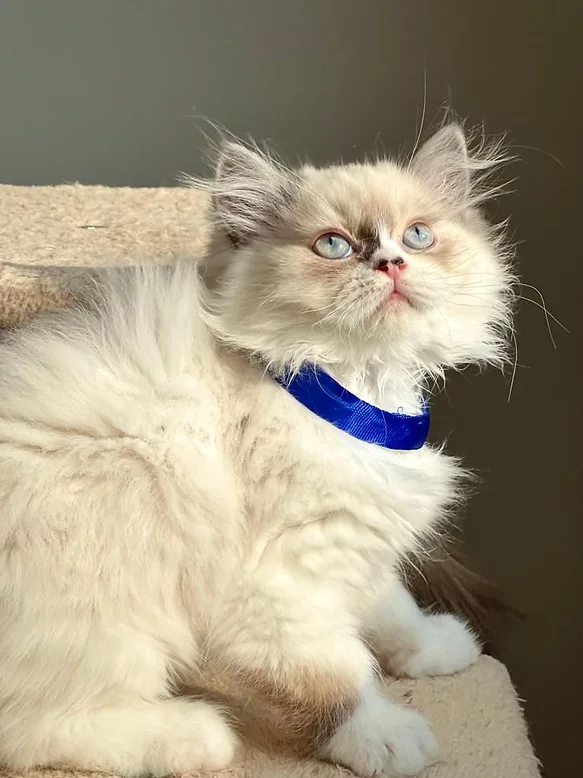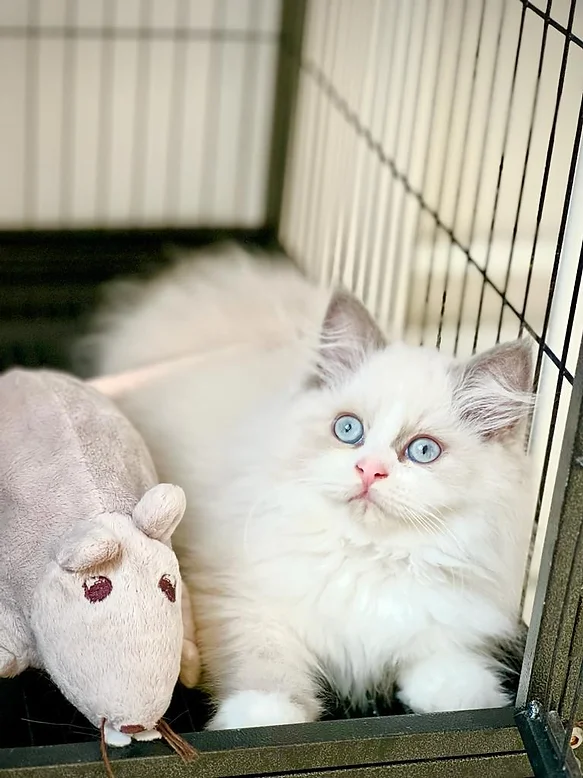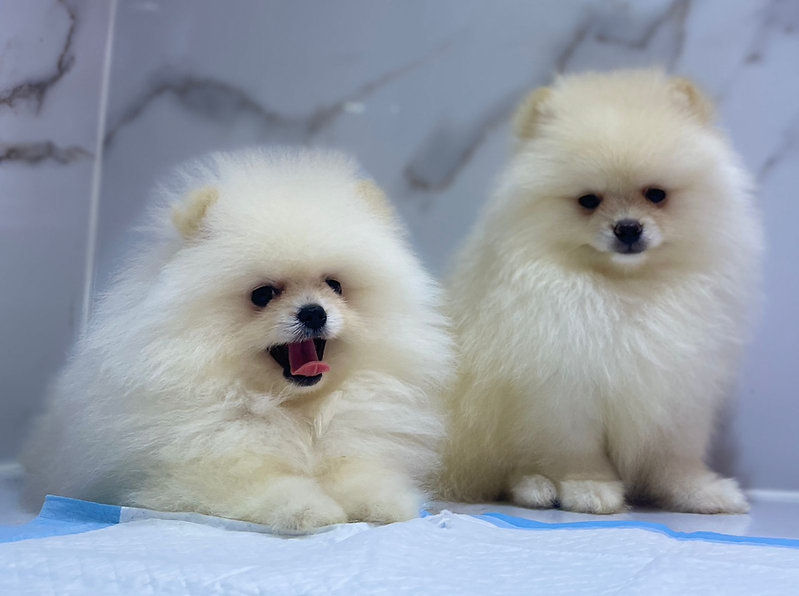Ragdoll Kittens: A Comprehensive Buying Handbook
- Petholicks

- Mar 20, 2024
- 4 min read
Updated: Oct 12, 2024
Introduction
Ragdolls are large and affectionate ideal lap cats. Ragdolls are born white due to a genetic mutation. Their coats begin to develop colors and patterns around two months and they have blue eyes to catch up the attention. Ragdolls are fit for bustling homes with plenty of people, so it is an ideal choice for those with many family members. Their easy-going personality and social temperament are a plus point. With proper introductions, they can also get along with other pets in the house. These affectionate cats prefer to be wherever you are, whether catching a favorite show on the couch or working on a project in the office or garage. Ragdoll cats have a well-earned reputation for displaying dog-like behavior while offering the easy care that comes with choosing a cat as a family pet.
Breed Overview
Their medium-length coat is silky soft and is compared to a rabbit Furr. Their ears are relatively small and are round. These cats are not overly muscled and are soft and flexible.
WEIGHT: 20 pounds or more
Maximum length of 40 inches
LENGTH OF COAT: Long hair
COAT COLOUR: Cream, chocolate, lilac, blue, seal, red, and seal
COAT PATTERNS: mitted, van, colorpoint, and bicolor
COLOUR OF EYES: Blue
LIFESPAN: 17 years
California is the origin.
History of the Ragdoll
There was a girl in California called Ann Baker who wanted to create a beautiful cat with a loving personality. In the 1960s she used a domestic long-haired white cat of unknown origin called Josephine with a cat maybe she owned to produce Ragdoll. After a few generations, she was successful in producing this cat breed with a large size and non-mating fur. Ragdolls were officially registered in 1993 as one of the most popular cat breeds.
Personality overview
Relaxed and affectionate cat to share home with
Are curious and are quite inclined to assist you in your daily day to day activities
Does not allow being treated as a toy by the kids
Slow-maturing cats meaning that are only fully grown at the age of 14
Caring for Ragdoll
Ragdoll not only needs nail trim like any other cat breed but also needs a good scratching post to sharpen their claws. The ragdoll needs brushing at least twice to avoid tangles. Ragdoll is a light-coated breed (has a single coat), so the amount of shedding is very low. Some people are allergic to the saliva and other secretions produced by the Ragdolls so are not considered hypoallergenic. These are just short must-know points that every pet parent needs to know.
Exercise that Ragdolls need
Ragdolls are energetic and social cats and enjoy playtime using cat toys or wands. It is not a good choice to just give them toys to play but it is equally important to play with them to have an interactive session. Ragdolls have a lot of weight issues, so exercise helps to maintain weight as well as avoid behavior concerns caused by boredom. You can use a puzzle feeder for their daily meals to keep them mentally active.
Health Concerns
Chubby cats might be cute but are not healthy. Weight issues are very common in Ragdolls so you should keep an eye on cats' daily portions so that you do not feed them too much. Try to limit treats to no more than 10% of their daily calories. As I mentioned above regular play time is very important for their weight management.
Bladder stones are very painful and common in Ragdolls.
Symptoms:
Blood in the urine
Crying in the litter box
Straining to urinate
Urinating outside the litter box
You can avoid Bladder stones in Ragdolls by encouraging them to drink fresh water. Regular veterinary checkups are very important for assessing the health of your Ragdoll.
HCM (Hypertrophic cardiomyopathy) is a heart disease that causes the thickening of the heart muscle. After the cat has developed HCM it can be diagnosed by an echocardiogram. Genetic testing can help breeders avoid breeding cats with HCM. There is no cure once a cat develops HCM.
Petholicks Pet Shop Dubai has always focused on ethical breeding and is a leader in this industry.
For Buying your Ragdoll from them:https://www.petholicksdubai.com/product-page/ragdoll-kittens-1
Diet and nutrition that Ragdolls need:
Canned or wet food can help avoid urinary infections in Ragdolls. We should avoid keeping food all day in their bowl which can lead to overeating and is a leading cause of diabetes in cats. Overeating can also lead to obesity and other health conditions so you should discuss with your veterinarian to chalk out a meal plan that fits with the dietary needs of your Ragdoll.
Supervet Pet Clinic in Dubai is a good choice as they have an elite group of experts who can help you with diet plans for your cats.
Things to know before getting a Ragdoll cat
Pros of Ragdoll Cats
Gregarious and ideal for families
devoted and adorable
jovial
Cons of Ragdoll Cats
Not allergy-prone
prone to heart and urine problems
Purchasing purebred ragdolls is costly.
Conclusion
In conclusion, ragdoll cats are adored for their gentle nature, gorgeous beauty, and loving personality. They are American natives who have gained popularity as companions because of their soft temperament and propensity to go limp in the hand. Ragdolls are great additions to any home, providing warmth and delight to their owners with their stunning blue eyes and soft fur.
FAQS
Are Ragdoll cats suitable for families with children?
Ragdoll cats are known for their gentle and affectionate nature, making them excellent companions for families with children. They tend to be patient and tolerant, often enjoying the company of children and participating in gentle play.
Do Ragdoll cats require a lot of grooming?
Ragdoll cats have semi-long fur that is prone to matting, so regular grooming is necessary to prevent tangles and keep their coat healthy. Brushing their fur a few times a week can help minimize shedding and reduce the risk of mats.
Are Ragdoll cats indoor or outdoor pets?
Ragdoll cats are typically best suited to indoor living environments where they can stay safe from potential dangers such as predators, traffic, and diseases. However, supervised outdoor time in a secure, enclosed area can provide them with mental stimulation and exercise.
More Cat Breeds and Further Research







Comments